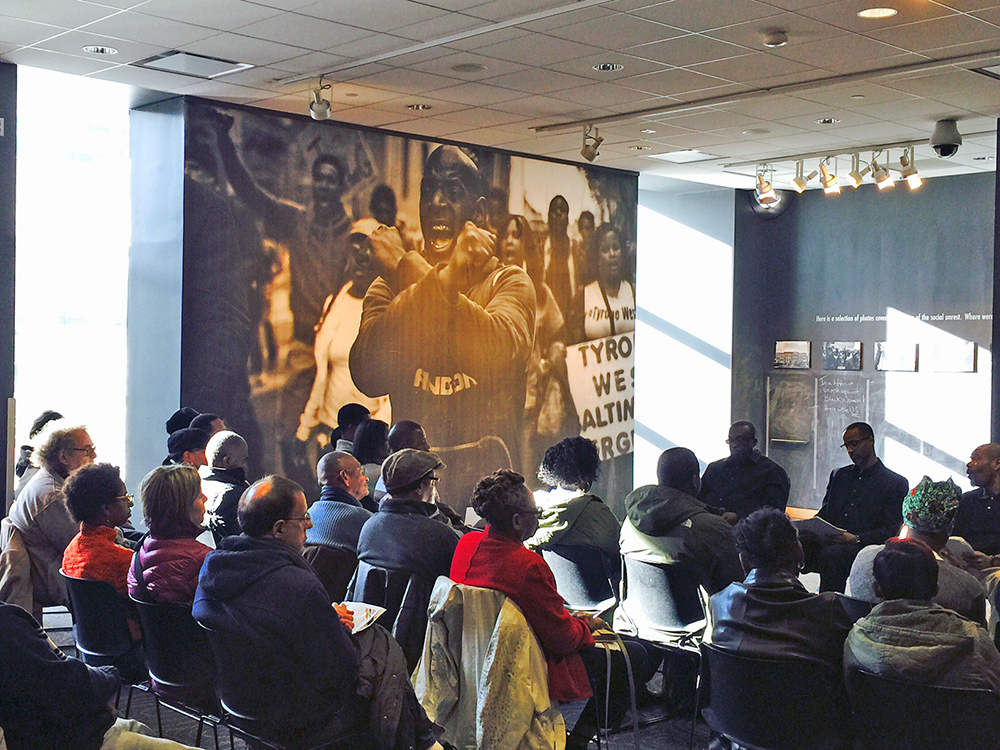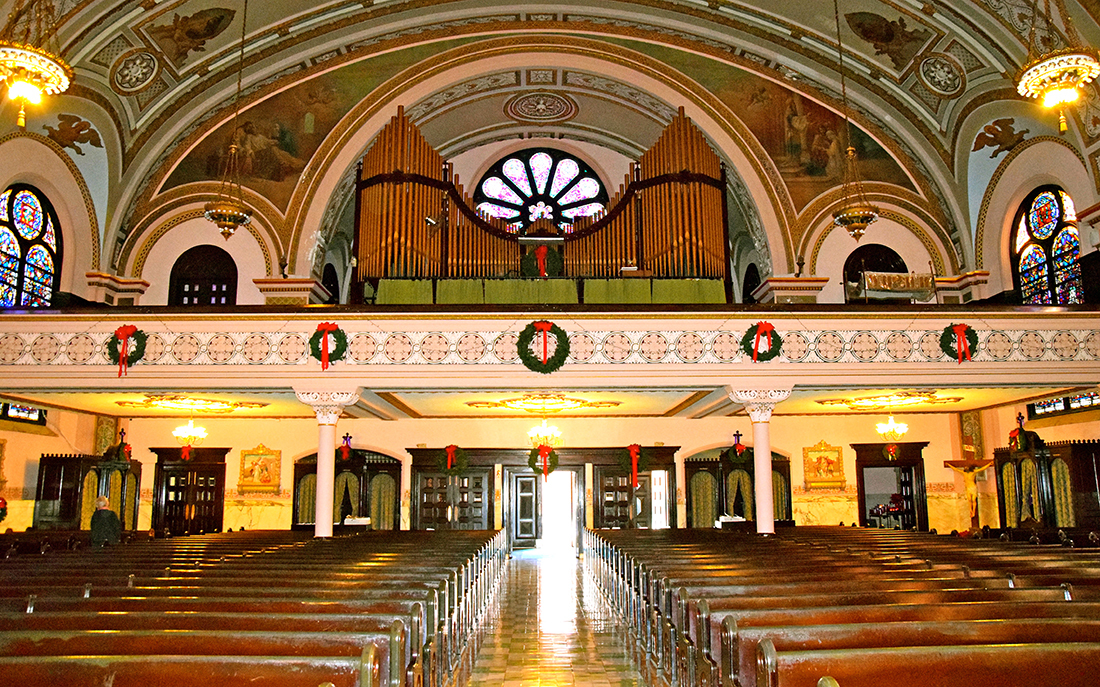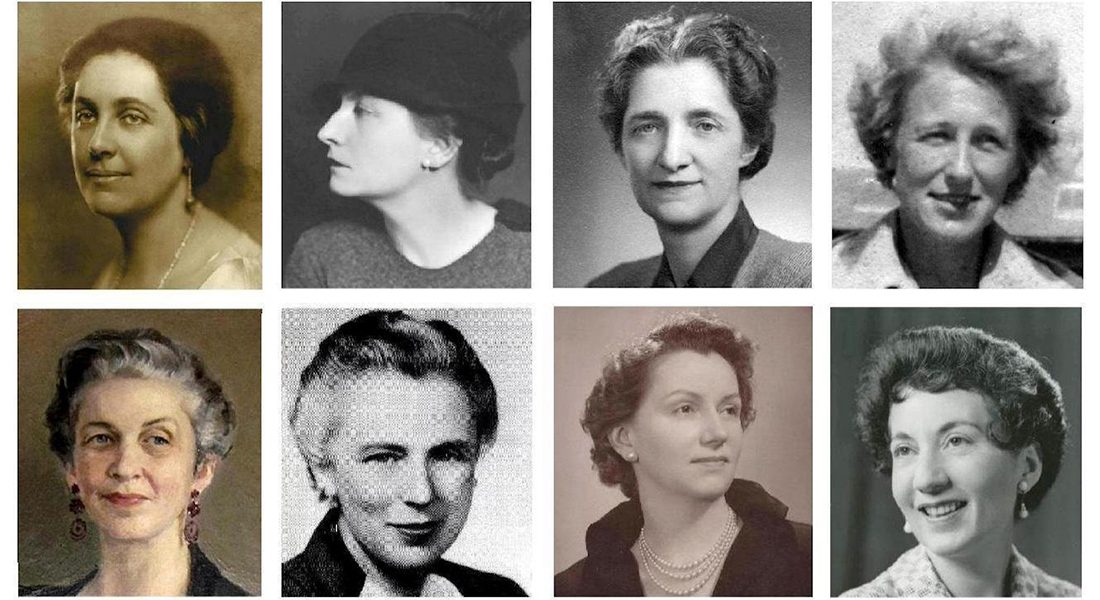News & Community
The Chatter: March 2016
Overheard at Enoch Pratt Free Library, Reginald F. Lewis Museum, and the East Baltimore Church Tour.
Female Form
January 9, 2016
Cathedral Street
“A labor of love,” says Jillian Storms, leading a tour through the detailed exhibit she has curated, “Early Women of Architecture in Maryland,” at the Enoch Pratt Free Library. Shedding light on a dozen pioneering women whose groundbreaking careers spanned from the 1920s through the 1960s, the exhibit includes portraits, biographies chronicling the steadfastness of their ambitions, and notable accomplishments—such as interior design at the National Academy of Sciences in D.C.—as well as copies of their original drawings and renderings.
Among those profiled: German-born Poldi Hirsch, whose family fled the Holocaust before she went on to study architecture in Switzerland. She later emigrated with her husband, settling in Havre de Grace where she designed a still-standing midcentury office building in which her husband began his medical practice.
Also included are Katherine Cutler Ficken and Rose Isabel Greely, the first licensed female architects in Maryland and Washington, and a reproduction of a Maryland Society of Registered Architects letter to Ficken. Dated May 2, 1938, the note advises that while she was “certainly eligible” to attend the organization’s annual dinner and meeting, as the only women in the society, she should check with her “good father” regarding the propriety of her attendance.
“We had a lot of trouble tracking her down,” Storms says. “She’d adopted a 4-month-old son when she was 45, but she died in 1968 of cancer when he was 11. Our college research assistant was ready to give up when we finally found him. It turned out he’d kept a photo album of her work, including that letter, all these years.”

Day Dream
January 18, 2016
East Pratt Street
“Mom, it feels like we’ve been here all day,” a girl with braids and glasses says, tugging her mother’s arm, not so much in protest, but in amazement at the full slate of MLK Day activities at the Reginald F. Lewis Museum.
At the moment, they’re heading into the museum’s first-floor community space for a reading of The Meeting, a play about a fictional get-together between Martin Luther King Jr. and Malcolm X, with local photographer Devin Allen’s wall-sized photos of last year’s Baltimore Uprising serving as backdrop. Other events offered today include screenings of the documentary films, Citizen King, The March, and MLK: The Assassination Tapes, as well as access to the current feature exhibition, “Ruth Starr Rose (1887-1965): Revelations of African American Life in Maryland and the World,” and the museum’s 8th Annual High School Juried Art Show. There’s also drop-in, MLK Day-themed arts and crafts for kids.
Depicting the civil rights leaders’ differing philosophies but shared sense of urgency and mutual respect, The Meeting draws a standing-room crowd—and this is the play’s second presentation this afternoon. Afterward, Larkis Webber, who portrays Malcolm X, and Doug Goldman, who plays King, join Morgan State University professor David Terry for an audience discussion, much of it centering on the influence of the two leaders’ childhood, religious, and regional influences. “I’ve been living this [stuff] for 51 years,” Goldman says at one point. “In the 1970s, I was bused to Hampstead Hill Junior High in Canton. If you missed the bus after school, you ran through Patterson Park until you got to a safe neighborhood.”
“As a Christian, I’m with Rev. King,” adds a woman at the end. “But as a mother, if someone hurt one of my children, then I’m with Malcolm. I’ll ask for forgiveness later.”

The Flock
January 2, 2016
Conkling Street
“I grew up in Fells Point when this neighborhood was called ‘Little Poland’,” says Anthony Monczewski, 70, the grandson of a Polish immigrant butcher, as he steps inside Holy Rosary Church. “They still celebrate Mass here in Polish.”
Dedicated in 1928, the massive Romanesque shrine includes two-story stained-glass windows, marble altars weighing a collective 49 tons, and a 3,000-pipe, mahogany-encased organ. Monczewski’s visit to his childhood church this Saturday is part of the second East Baltimore Christmas Church Tour and one of seven stops celebrating historic parishes while their holiday decorations remain in full swing.
The morning begins with pastries and coffee at the Sacred Heart of Jesus, which celebrated its first Mass in Highlandtown in 1873. Also included: Our Lady of Pompei in “little” Little Italy, St. Leo the Great in Little Italy, St. Casimir and St. Brigid in Canton, and St. Elizabeth of Hungary at Patterson Park.
Inside Our Lady of Pompei, a gorgeous 1923 church built for Italian immigrants and known for its illuminated statue of Mary, pastor Luigi Esposito smiles as he recalls an early sermon. “Father Lou” recently celebrated 50 years of service to the parish, although the Naples native admits to the group that he occasionally stumbled in his Sunday homilies as a young priest. “I was trying to express the idea of the shepherd helping a lost sheep back into the sheepfold—a very common Christian metaphor.
“Well, the Italian word for sheepfold is ovile, so I figured the English word was the one that sounded closest,” he says, laughing, “and told the congregation that we must each help the lost sheep into the oven.”
